Stig - the first 'inshore' Mini Maxi
While Bella Mente owner Hap Fauth has been integral to the Mini Maxi class from its inception, with the launch of the Judel Vrolijk 72 Stig, new blood has arrived in the class in the form of Italian financier Alessandro Rombelli.
Rombelli previously owned a Baltic 65 cruiser racer of the same name which he campaigned at past Maxi Yacht Rolex Cups. However since then Rombelli has become increasingly absorbed by racing. Last year he campaigned a Melges 20 and in December won the class’ Gold Cup in Miami ahead of top Melges sailor and fellow countryman Luca Lalli of B-Lin Sailing fame.
“Since we developed the 65, I started to become more and more intrigued with racing in one designs,” Rombelli explains. “I normally race on a Melges 20 and I have become less and less interested in handicap racing. Handicap racing sometimes gives results that are difficult to explain, so we prefer to race in a more or less one design box rule type of situation, which is the situation now with the Mini Maxis.” Or at least the 72ft Mini Maxis.
An interesting aspect to the new Stig is that she is the first grand prix race boat to have been built by Baltic Yachts since the 1990s. While the yard in Finland is a now a giant among superyacht builders – for example they built the 236ft Hetairos, the world’s largest composite yacht - their origins back in the 1970s lie in production boats and one-off race boats including the likes of the iPunkt Admiral’s Cupper and the Finnish Whitbread maxi Martella.
Baltic was clearly keen to try their hand at a race boat again as they took back the previous Stig as part of the deal with Rombelli to build his new one. In addition to allowing them to get back into the race boat construction market, the process of building a race boat, where accuracy is vital particularly where weight is concerned, is something that is certain to have benefits for their non-race boat projects too. For Baltic is prolific – at present in build they have a 62ft Judel-Vrolijk high performance cruiser, a 65ft cruiser/racer also from J-V, a 112ft Nauta fast cruiser from Reichel Pugh and a Panamax 197 ketch.
Building a race boat also gave them the opportunity to work with some new materials. While with boats like Hetairos they have extensive experience working with carbon fibre, according to Sales Director Kenneth Nyfelt they had never used Kevlar Nomex before or had to deal with some of its awkward quirks. “It has to be thermoformed and shaped in advance. You cannot shape it on the mould,” Nyfelt points out.
Otherwise Stig was constructed in a female mould, the hull mould built in two halfs with CNCed tooling. While the materials used were predominately pre-preg carbon fibre (cooked at 85°C) and aramid Nomex, for safety’s safe they also used foam core in the bow section where there was greatest curvature to the hull, an area also most prone to slamming.
Another challenging aspect to the build, indeed the entire project, was the ultra-tight time frame. As Alessandro Rombelli says: “From the time Rolf [Vrolijk] put a pencil to a piece of paper to our launching the boat was just eight months. So it was a very ambitious project. We launched the boat on 6 July and then we did some finishing work and then we took the boat to Copa del Rey which started on 16 July. We did a little bit of training, but we have been very pleased with the results that we achieved in Palma: We finished third overall, but more importantly we managed to win four races and in another we finished second. So five times we managed to finish in front of Rán, which is our role model in terms of boats. This speaks volumes about what we have achieved.” And this was with an all-Italian crew that was relatively inexperienced when it comes to Mini Maxi racing, albeit including many experienced hands from the TP52s, America’s Cup and Olympics plus the talented former Melges 24 and 32 World Champion Lorenzo Bressani.
Kenneth Nyfelt says a significant problem with the tight time frame was getting suppliers to meet their demands, however they also eased the burden by farming out some of the work. For example McConaghy supplied the mechanism and casing for the lifting prop (as Bella Mente has) along with the rudders and the wheels.
On the design side as previously mentioned, Stig is the most inshore-orientated of the existing Mini Maxis, but while she is optimised for this, Rombelli still wants to use her to compete in offshore events in the Med and there is a tentative plan to be on the start line of this autumn’s Rolex Middle Sea Race.
Due to the time constraints there was no opportunity for Judel-Vrolijk to carry out any additional R&D and the team was not able to tap into Bella Mente’s R&D as that was the American team’s intellectual property.
Like Belle Mente and unlike Rán 2, the new Stig is built to the 72ft length limit of the Mini Maxi class, the designers using Rán 2 as a starting point, offering Rombelli and his team five different concepts of boat from narrow ones to fat sterned ones. The indications are that they opted for a hull shape closer to the former: Rolf Vrolijk says Stig’s effective waterline length when heeled is some 0.5m longer than Rán 2’s and her waterline is some 200m narrower.
“Stig is a slightly longer boat in design. She has similar stability to what Rán has now, but with a narrower waterline,” says Vrolijk. “She is the boat that should be the most light wind-orientated.”
Project Manager of Stig is Sylvio Arrivabene, who worked with Vrolijk at Alinghi, where he project managed the build of Ernesto Bertarelli's massive Alinghi 5 catamaran. He sailed a few races last year aboard the Baltic 65 Stig and when Alessandro Rombelli decided he wanted to press ahead with the Mini Maxi, he was asked to project manage it.
The build itself took just six months and Arrivabene says he was impressed that Baltic Yachts achieved this on schedule. “They are used to cruising boats and it is very standardised, even their working hours and shifts – so for them it was a massive job they took on. In fairness to them they did a great job. Rolf gave advice, we tried to bring in suppliers with already a very good track record in racing yachts and that all helped, but Baltic did a great job and they switched their mentality and they dedicated to this project a group of young motivated guys – they did it well.”
Arrivabene was one of the weight police up at Baltic, emphasising the importance of using exact amounts of materials. “It is all free performance - if you can build something light or within the weight, that [weight saved] is all taken and put into the bulb. It was almost an hourly process with the Baltic guys to make sure they were always on top of that and they understood what we were trying to do.” He says that Stig left Baltic light compared to Vrolijk’s weight predictions, having made savings in some of the systems they chose.
They were in the fortunate position of being able to learn from Belle Mente’s misfortune when she suffered the deck wrinkle during the Newport-Bermuda race. “The structure is the same - it was just the thickness of the core and the transition from one thickness to another in the deck had to be smoother,” Arrivabene gives his take on that issue. Fortunately SDK, who carried out the engineering of both boats, once again Arrivabene had worked with previously at Alinghi; a useful club to belong to.
As with Bella Mente, Stig has a Hall Spars mast and boom, but in their case has Carbo-Link carbon fibre standing rigging (as used on Alinghi 5). Cariboni supplied the hydraulics, Harken and Jon William’s company stayinphase handled the winch package and its integration with the hydraulics. Electronics have been supplied and set up by Diverse including their state of the art FaRO processor, developed by the boffins at Desafio Espanol during the 32nd AC.
For their standing rigging Arrivabene says they benefitted from Carbo-Link’s work with Groupama for the Volvo Ocean Race in areas such as spreader tips and their chainplates (which are located below deck to reduce windage). The Carbo-Link rigging is continuous and fitted, then cured by ‘ohmic resistance’, in other words by passing a currently through the rigging. Unlike Bella Mente, Stig’s spreaders are swept back and her sail plan is very similar to Rán 2’s.
With the rig, Arrivabene once again tapped into his ex-Alinghi design team colleagues and enlisted their one time mast designer Kirst Feddersen, who helped out with some Finite Element Analysis and design work with the Stig rig, although Arrivabene adds that this - as with the rest of Stig project - was extremely hurried.
Their sailmaker is North Sails Italy and among the crew they have Alessio Razeto as a trimmer who is Sales Manager for the Italian loft. All the sails apart from the kites are in 3Di, which Arrivabene observes is now a similar price to 3DL to entice more people into using it.
Again they were able to use Rán 2’s sail wardrobe from two years ago as their starting point and are now starting to develop their own inventory. Typically in Stig's arsenal is four or five jibs, a similar number of A sails plus inshore and an offshore mainsails and genoa and spinnaker staysails. According to Arrivabene they are just now working on their offshore wardrobe, including Code 0s and A3s, something that will have to come together if they are to compete in the Rolex Middle Sea Race.
On Stig the winch powered take-down system for the kites, again developed by Jon Williams, is similar to Rán 2’s in as a much as the take down line runs down through the foredeck hatch (slight angled to port) and then aft down the port side of the boat, partially across the transom and then back up to a drum located under the utility winch in the pit. However on Stig this drum is located at ankle height, just off the cabin sole. “It is super smooth and a low friction system,” says Arrivabene. “We are getting sails down in less than 10 seconds... The good thing about it is that you can drop it to windward to leeward, wherever you like, and it just comes in.”
Stig’s cockpit arrangement is very similar to that of Rán 2 with four pedestals, three just aft of the pit and another just aft of the island for the main sheet winch. Compared to Bella Mente's set-up which has two of the pedestals right aft, Arrivabene says the more conventional location of the pedestals makes linking them to winches much simpler (and therefore lighter). “We have plenty of flexibility. With any pedestal you can do any function and the rotary pump {for the hydraulics – powered by the pedestals) is from Cariboni with 15 little pistons – it is pretty cool, very compact and light.”
Stig has gone for stripes of grip tape on the cockpit sole (like the Audi Azzurra TP52) to show they mean business when it comes to saving weight. Similarly the pit area is divided up around the central companionway, with just the jib halyard visible outside of the mast, enabling it to be bounced up if necessary.
Controls for the positioning of the vertical and lateral positioning of the jib fairlead rings is controlled by two hydraulic rams located on the centre line, rather than having two rams on each side. So for example one ram controls the up-down on both sides, with the added advantage that the system makes it easy to duplicate settings between tacks.
Down below Stig looks very similar to Bella Mente in terms of her structure with robust-looking 300mm deep ring frames throughout the boat. The only indication that she is more inshore orientated than the American Mini Maxi is that we could occasionally feel a fraction more spring in the deck.
They have a reel system for winding up the spinnaker sheet ends as we had demonstrated to us on the TP52s earlier in the year. This comes from the same manufacturer in Portugal as the one used on Audi Azzurra, although it has been customised to fit the bigger boat.
The ‘saloon’ area has the heads of the three giant keel bolts showing on the floor. Below it the foil is hollow steel, built by Italian manufacturer Re Fraschini, who supplied daggerboards and rudders to many of the VO70s. Forward on the mast are the hydraulic rams for the vang and Cunningham while on the front of the mast is another for the backstay deflectors and there is another down low for the mast butt. We didn’t see them, but we have subsequently learned that pipework for the hydraulics on board is in carbon fibre, which given the large amount of pipework should represent a significant weight saving over conventional steel piping.
Generally the interior on Stig is very empty, but there is a few more visible lines between mast and cockpit than there are on Bella Mente.
Stig is lining up to compete on the Mediterranean Mini Maxi circuit in 2013, when she and the others will go head to head with the new Alegre, bringing the tally of 72s next year up to five.
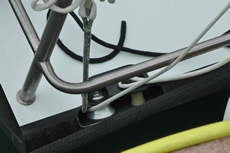 |
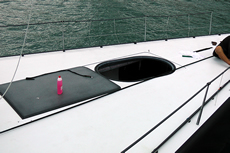 |
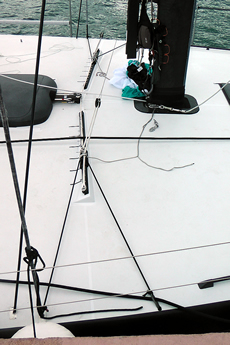 |
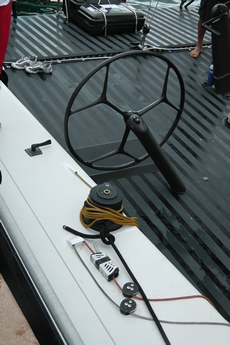 |
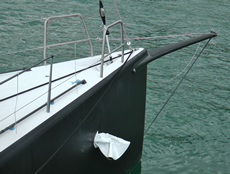 |
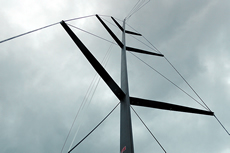 |
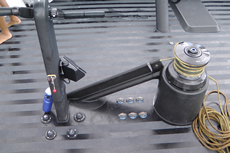 |
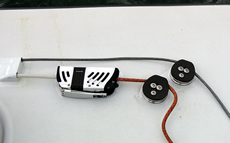 |
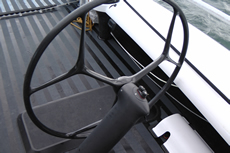 |
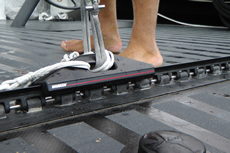 |
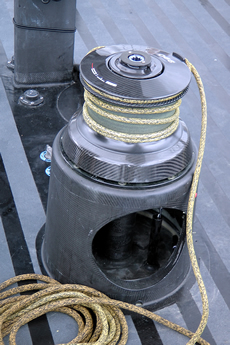 |
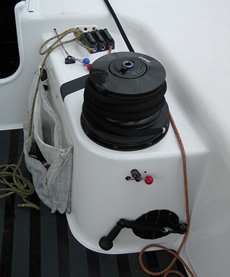 |
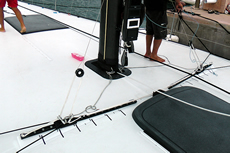 |
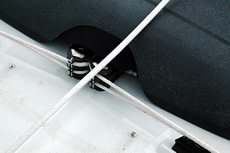 |
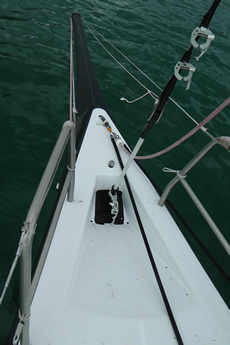 |
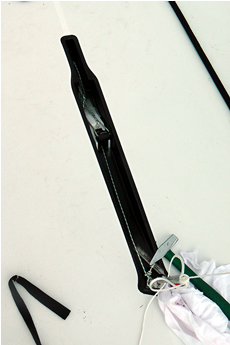 |
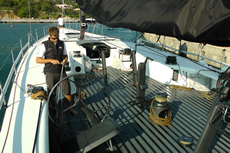 |
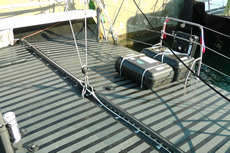 |
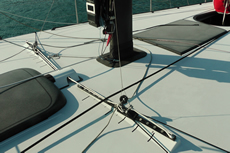 |
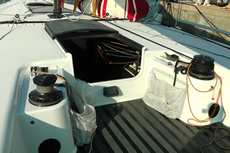 |
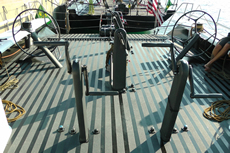 |
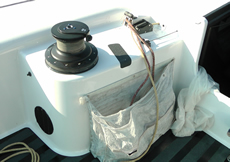 |
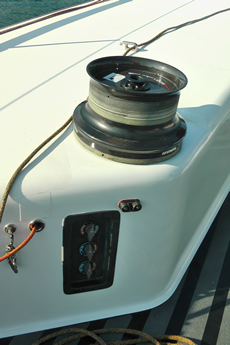 |
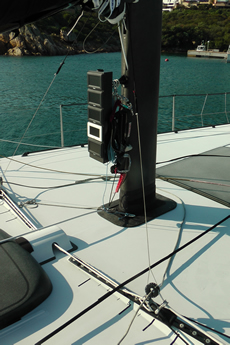 |
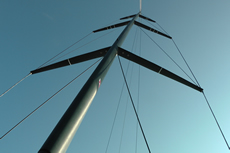 |
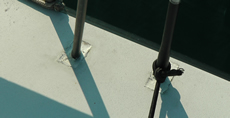 |
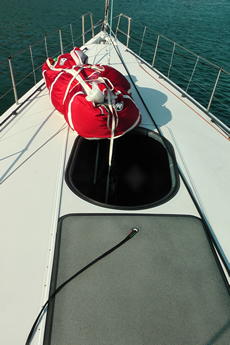 |
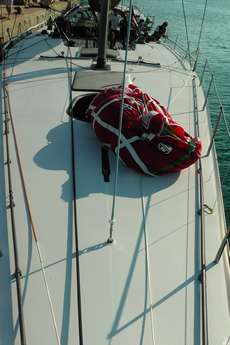 |

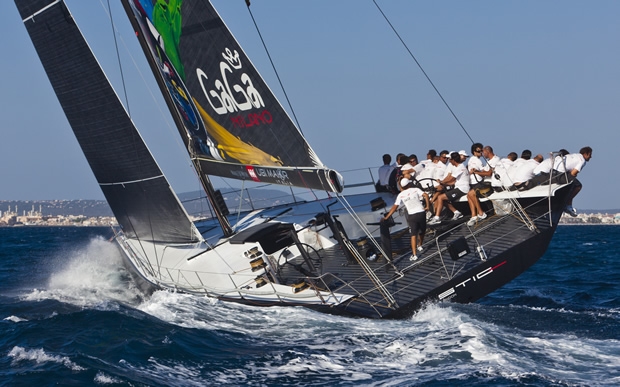
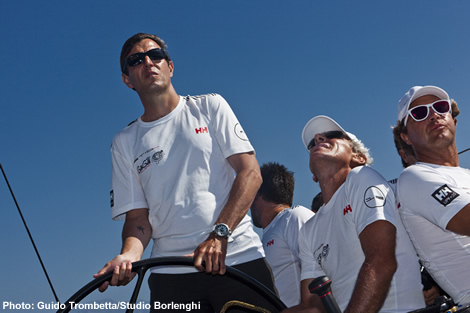
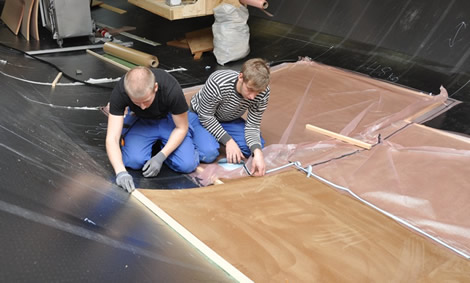
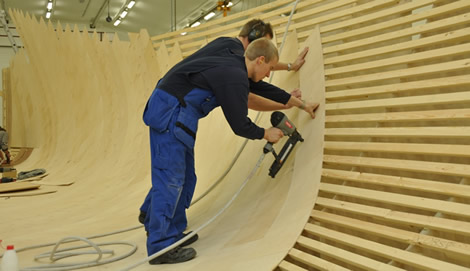
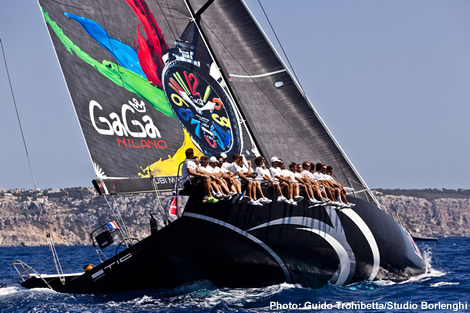
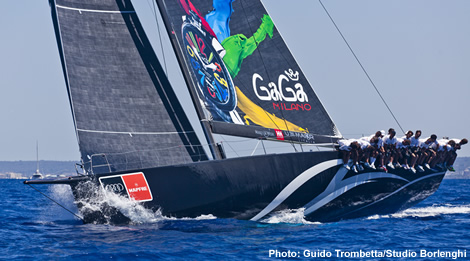
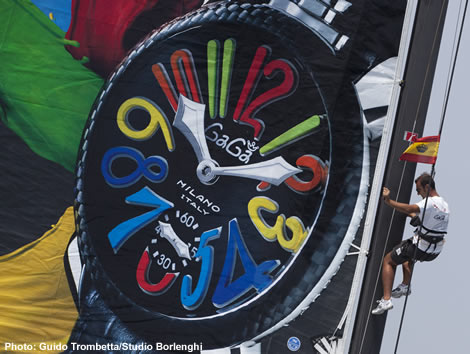
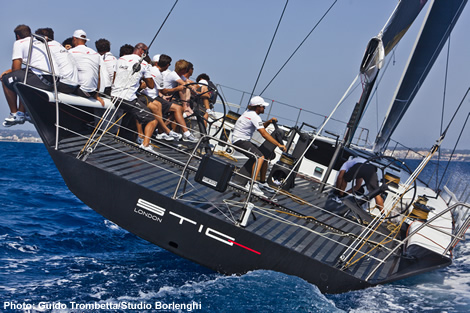
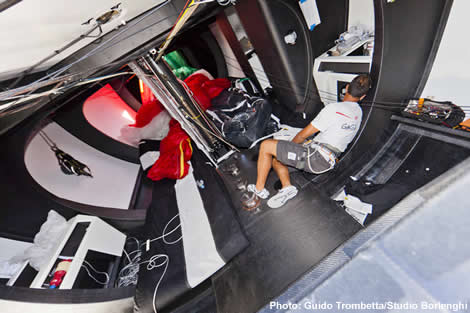
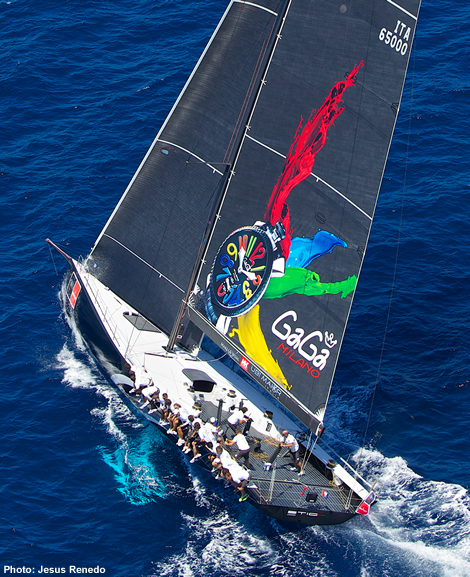










Latest Comments
Add a comment - Members log in